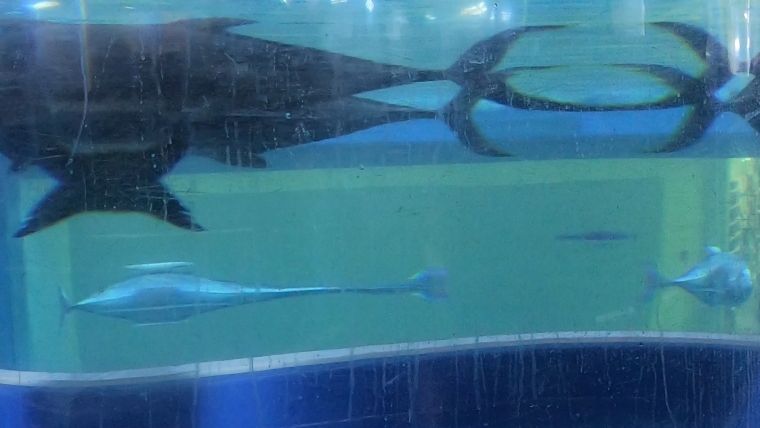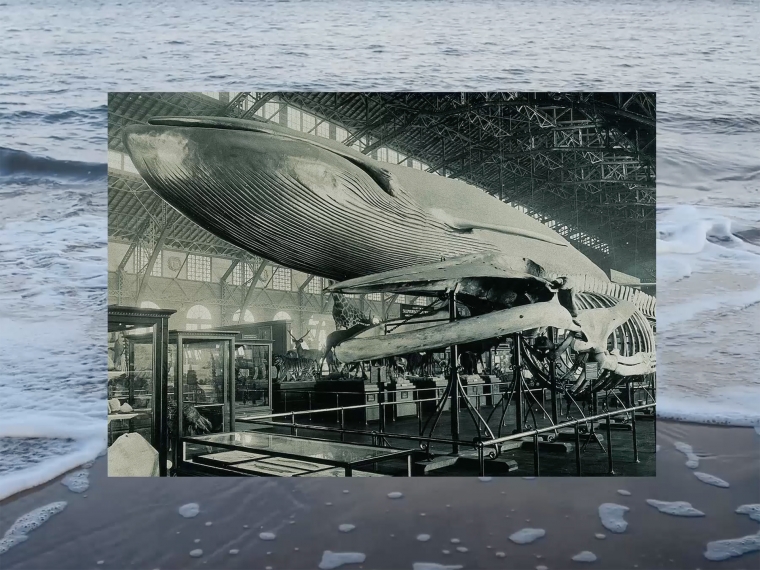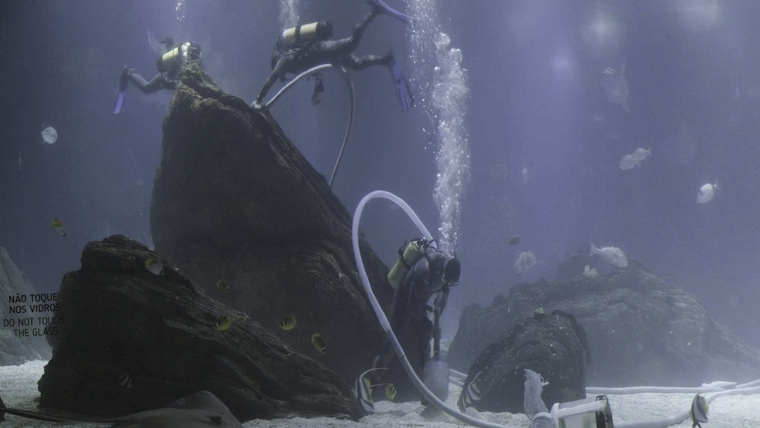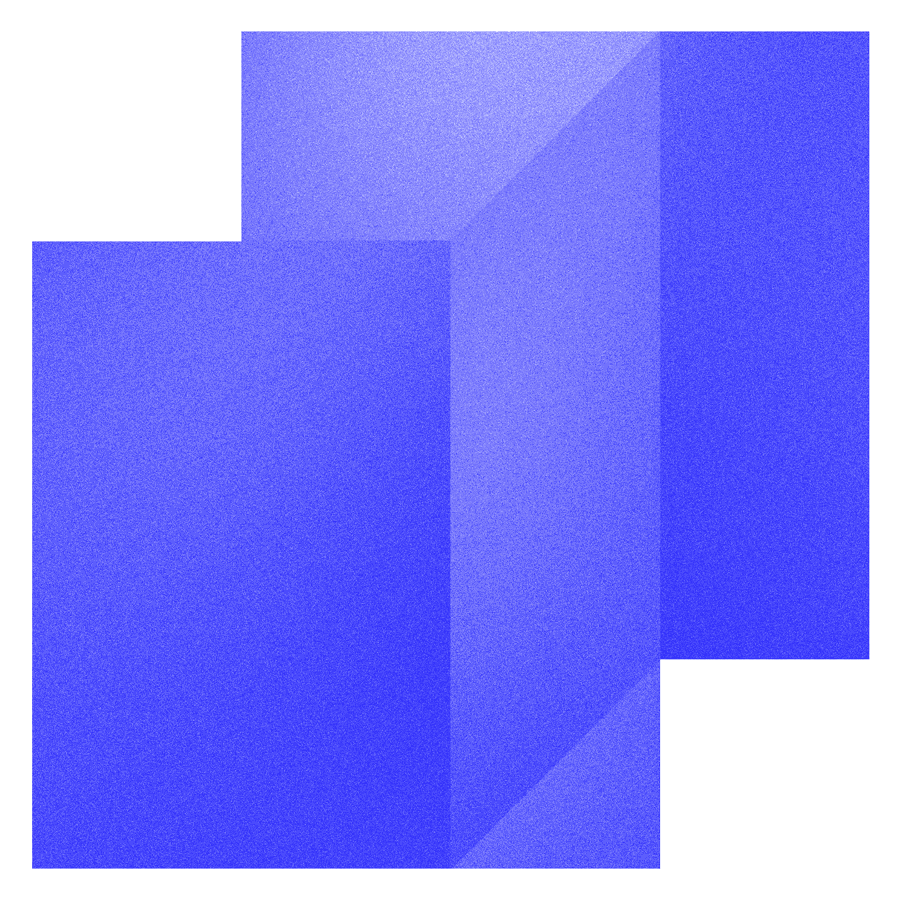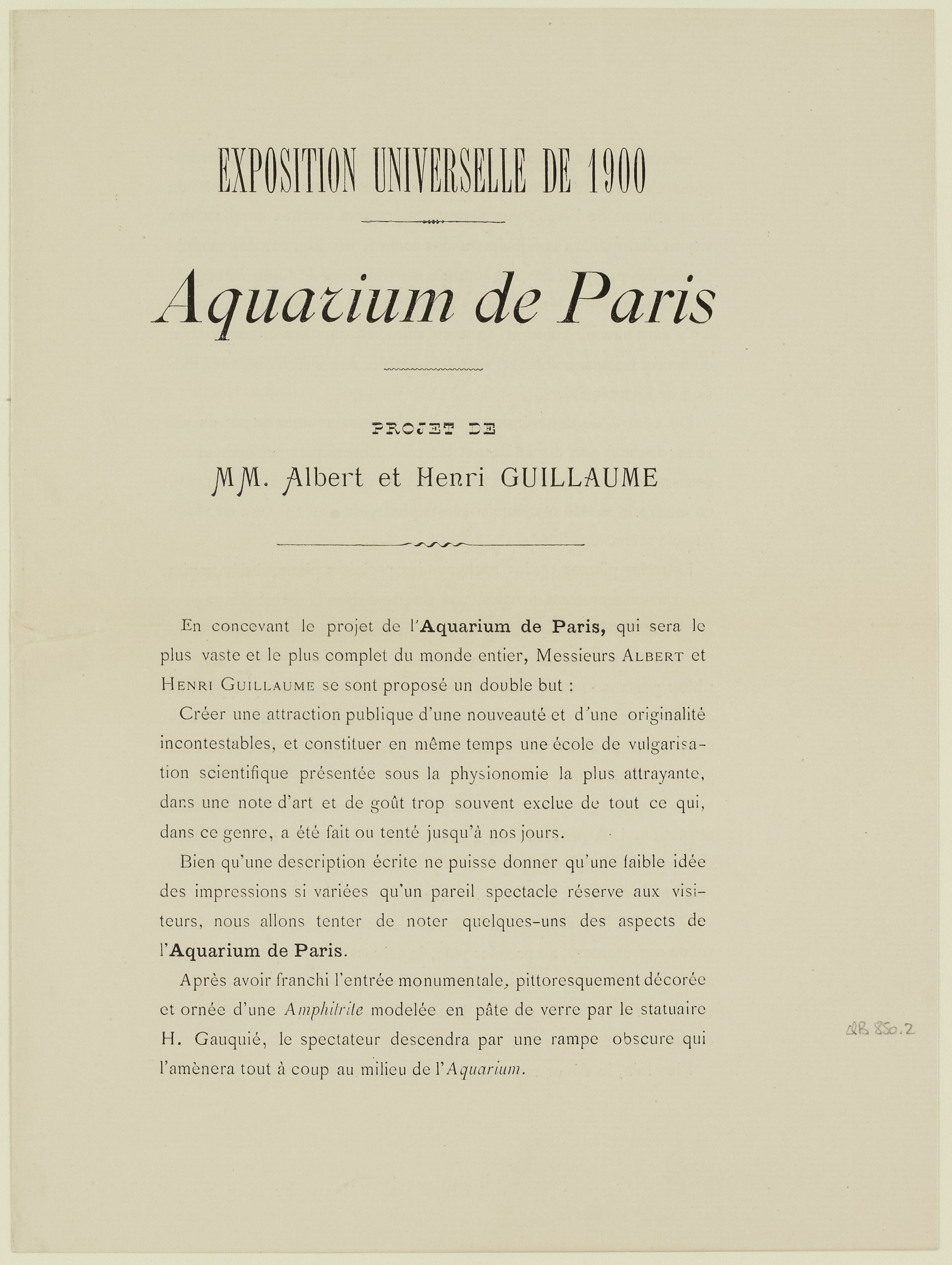
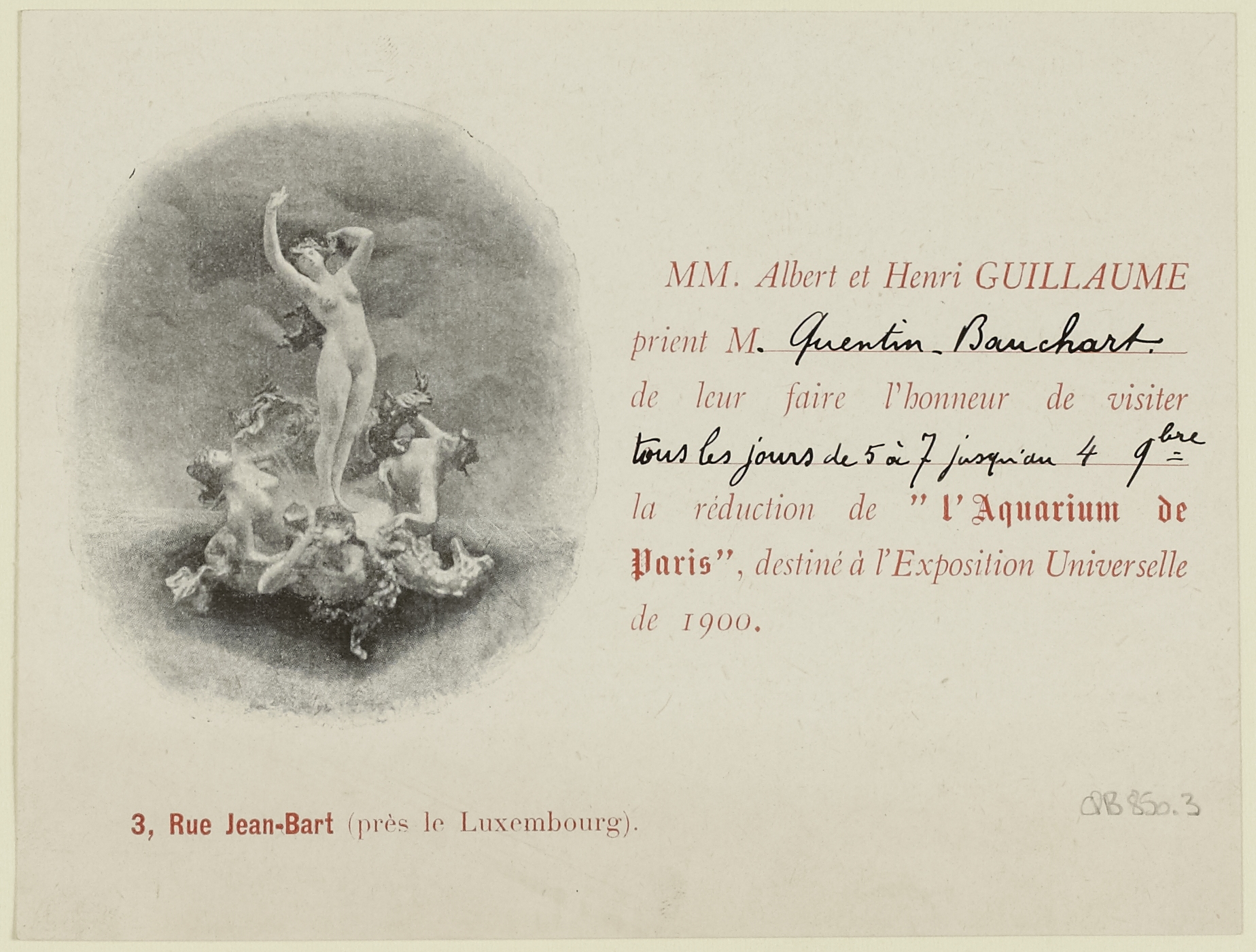
|
Above: “Aquarium de Paris / projet de / MM. Albert et Henri Guillaume”. CC0 Paris Musées / Musée Carnavalet – Histoire de Paris (QB.850-2). |
Below: Invitation card for the visit to the Aquarium de Paris. CC0 Paris Musées / Musée Carnavalet – Histoire de Paris (QB.850-3). |
The Aquarium as a Staging Machine
Angela Rui
For the Exposition de Paris 1900 – an event which marked the passage from the informative and positivist intentions of the nineteenth century to the taste for the artificial and for special effects of the twentieth – brothers Albert and Henri Guillaume would implement their project for “The Underwater World”, also known as the “Aquarium de Paris”. The pavilion included a stage and a curved wall made of tanks with a dry section behind them used for scenery and lighting.
This mise-en-scène even featured mermaids who would perform out of the water, transported on a conveyor belt. Reflected by a mirror placed at 45°, the performers would thus appear to be swimming among the fish in the tanks, and the music from the backstage orchestra would further heighten the charm of the visit.
The architecture of the aquarium, both then and now, may be interpreted as a complex staging machine. Thanks to improvements in technology, such as large transparent and very high-performance screens, the architecture melts away, and the sense of water and life inside the water begins to dominate the view.
|
“L’Aquarium de Paris”, heliotype (Paris: Héliotypie Buirette & Cie , Imprimeur). Musée Carnavalet, Histoire de Paris. CC0 Paris Musées / Musée Carnavalet - Histoire de Paris (QB.861). CC0 Paris Musées / Musée Carnavalet - Histoire de Paris.
[scroll horizontally] |
|

So, where should we see from? Does architecture contribute to shaping the illusion of being part of the ocean?
In the darkness of public aquaria, and in the ever-growing sense of total immersion, the common ground between aquarium and stage is intensified, and the invisible screen of theatre emerges.
On 28 January 2014, the People’s Republic of China opened the largest aquarium in the world, the Chimelong Ocean Kingdom in Hengqin, which occupies an overall surface of 20.72 square kilometres, including two water rides, three rollercoasters, more than ten roundabouts, three theatres and a cinema with a 1,500-square-metre curved screen.
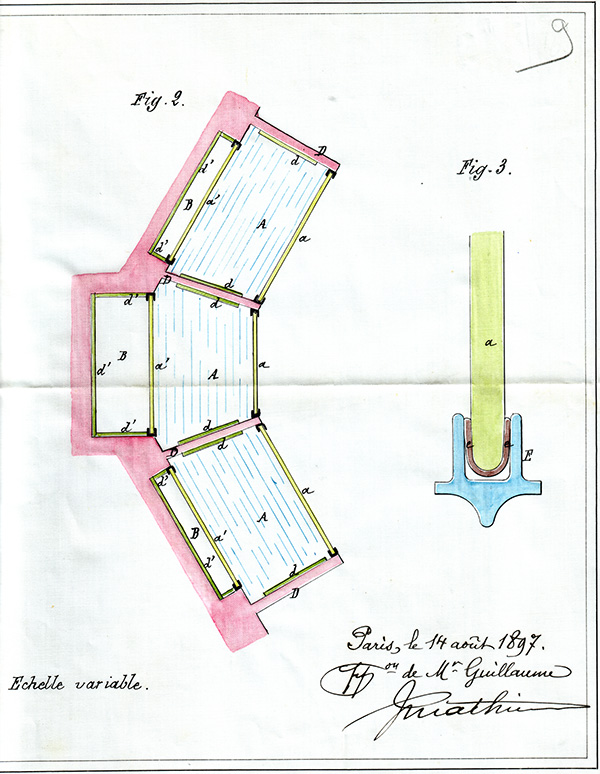 |
Fig. 2: Horizontal section of a group of trays placed side by side. Fig. 3: System for hermetically sealing the glass sheets in their frames. Albert Guillaume, "Mémoire descriptif à l'appui de la demande d'un Brevet d'invention pour un dispositif perfectionné d'aquarium", Institut national de la propriété industrielle, Paris, 14 August 1897. |
|
Angela Rui is a curator and researcher based in Milan who works in design theory and criticism. She believes that design is positioned as a critical practice that problematises conventional ways of inhabiting and experiencing the world, and that designers could operate in domains that demand their capacity to translate, raise awareness and visualise challenges and inequalities as well as currently unrecognised collective commons. Among other projects, she co-curated I See That I See What You don’t See the Dutch Pavilion for Broken Nature – XXII Triennale di Milano (2019), and Faraway So Close – the 25th Design Biennial of Ljubljana (2017). She is currently teaching the “Pedagogies of the Sea” course on the Geo-Design Master programme at the Design Academy Eindhoven.
|
“maat Explorations” is an ongoing programme that delves into the socio-cultural and environmental transformations concerning the current bio crisis and ecological destruction, providing insight into the hard science of climate intervention and the creative speculations behind innovation-led research to safeguard our planetary co-existence.
The exhibition Aquaria – Or the Illusion of a Boxed Sea (maat, 18/03 – 06/09/2021) reflects on the possibilities and new questions that arise when rethinking our relationship with the marine world. Curated by Angela Rui, the exhibition path unfolds through 11 installations offering different points of view to emphasise how the ways of understanding the marine environment were once designed and how they should be reconsidered today.
|



